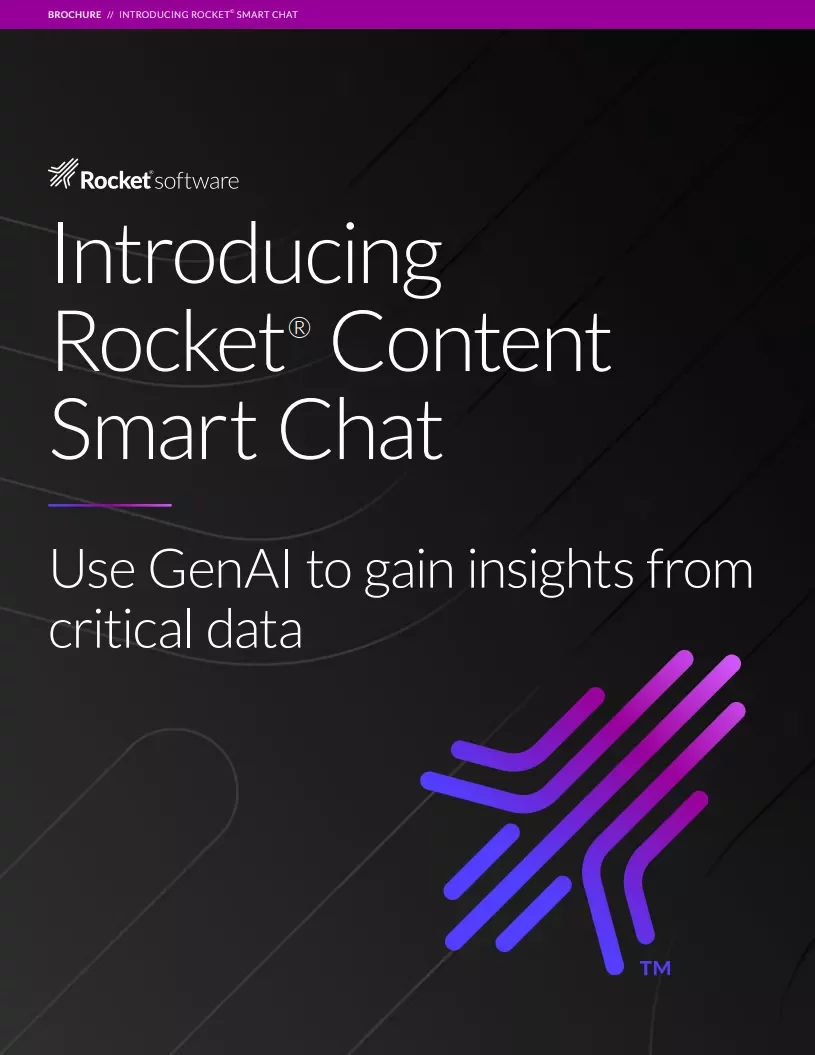Go From Information to Knowledge with GenAI - Part 2
The first entry of this blog series — dedicated to exploring the impact of AI on content management — outlined areas where you could derive more value from unstructured enterprise information with GenAI. We concluded that the opportunities to transform traditional information into differentiating knowledge for greater business and industry impact are plentiful for users, architects/engineers, and executives. But there are real-world challenges and considerations for adopting GenAI. And they are the focus of this second blog entry.
Use case: an insurance company
To highlight some of organizational challenges of adopting GenAI, let’s consider a use case: An insurance company is looking to gain more insights from unstructured data: insurance policies, legal contracts, and other related business documents. But its organizational complexity and distributed centers of knowledge means that simply plugging “the data into a Large Language Model (LLM)” to process sales, customer service, or other business requests is insufficient.
This is because the organization is siloed into multiple teams with dozens of agents per team. Each is trained for different types of claims and for working with varied sources of information and unique application ecosystems. Also, each group often requires “context sensitivity” — the ability of an AI model to understand and respond appropriately based on the surrounding information or background knowledge, rather than just the immediate input. And this requisite applies to both structured and unstructured data when interacting with LLMs for effective insights, control costs, and governance.
GenAI Challenges by topic and impacted stakeholder
The above scenario is relevant to many other industries and horizontal solutions. For instance, Product Information Solutions are crucial to the following: insurance (policy documents, legal details, etc.), financial services (prospectus, statements, etc.), manufacturing (product specifications, warrantees, etc.), and more. Similarly, Product Information Solutions are popular in application ecosystems like SAP where unstructured information related to business transactions optimize GenAI insights. Popular GenAI use cases on operational information include Product Information Solutions, Contracts Management, and a Common GenAI IT Service for delivering repeatable solutions to application teams. Each of these industry and horizontal solutions face the challenges summarized in the table below.
| Topic | Challenges (Impacted Stakeholders) |
| Insight Accuracy / Efficacy | Context sensitivity - businesses must have a mix of structured and unstructured information for GenAI efficacy, requiring different handling (architects / engineering) Communicating confidence - experience that informs users of effective vs. non-confident answers (User) |
| Disparate Information Sources | Multiple repositories – necessary information exists in various locations creating challenges of duplicating systems/data where re-engineering become a challenge to adoption (Architects / Engineering). Multiple user experiences – Users must consult multiple sources / applications to get an insights and answers (Users) |
| Applications and Ecosystems | Application workflow – embed GenAI naturally into applications with existing workflows (Architects / Engineering). Cross-application consistency - Bring consistency amongst application ecosystems like SAP HANA into a singular managed approach, avoiding inconsistency and complexity per vendor approaches (Architects / Engineering & Users) |
| Time To Value | Investments – balancing budgets between the challenges of disparate information sources and application ecosystems (Executives) Delivery and operations – GenAI technologies can bring a host of new tech stacks into enterprises, is there a way to leverage what you have? (Architects / Engineering & Users) |
| Risk Management | Curated data sources – your organization has carefully designed “who can access what information” policies and GenAI must honor these rules (Architects / Engineering) Sub-document permissions – as you expand information to new GenAI use cases, new forms of data sensitivity within documents such as redaction become important (Architects / Engineering) |
| Cost Management | LLM cost management – optimizing information interactions with LLMs is needed to contain costs Risk management costs – there are many costs to achieving the organization’s risk management needs, highlighted in curated data sources and sub-document permissions |
Security over your data, accuracy of GenAI insights, cost management controls, and overall risk position are key considerations for users, architects, and executives in adopting GenAI. A combination of some or all of these challenges can exacerbate an organization’s safety concerns. And your GenAI solution must adapt to achieve your safety goals.
Enhancing content management with Rocket® Content Smart Chat
To further empower organizations in their data transformation journey, we offer Rocket® Content Smart Chat. This GenAI-powered conversational interface allows users to make natural language inquiries across various systems, simplifying access to critical data and content. By integrating seamlessly into your existing applications, Rocket Content Smart Chat enhances content management with AI-driven insights, securely streamlining operations and promoting informed decision-making.
Embrace the future of data management with Rocket Software’s innovative solutions and transform your information into actionable knowledge. Learn more by downloading the Smart Chat brochure or talking to an expert.
Related posts
Reflecting on the Gartner Data & Analytics Summit: Key Takeaways
New Era of Mainframe Modernization with IBM z17
Mainframes are not just alive—they’re thriving.
Willkommen zur Modernisierung. Ohne Unterbrechung.
Wir treffen Sie, wo immer Sie sind, und passen unsere Strategien an Ihre spezifischen Ziele und Vorgaben an.
